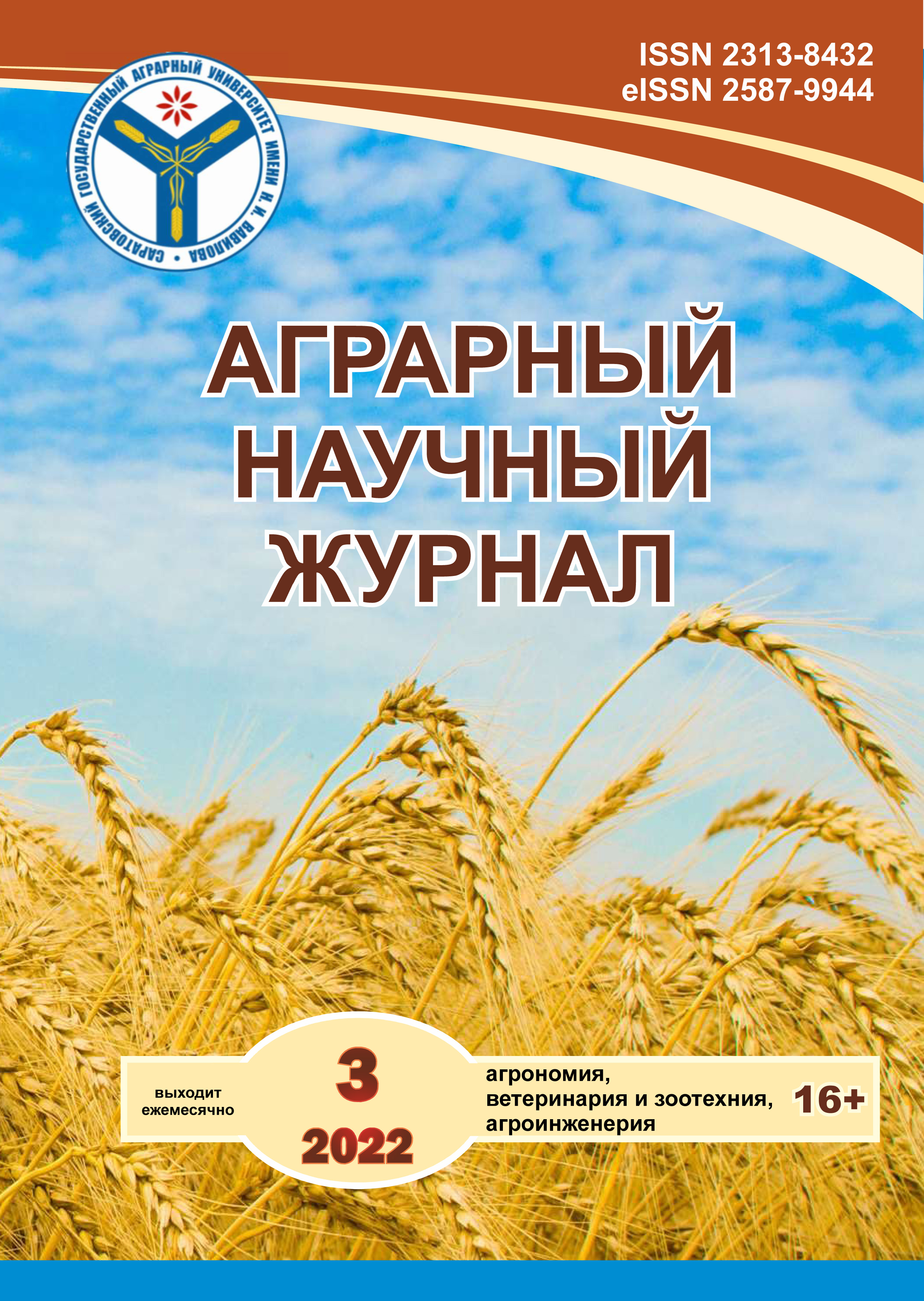Influence of drying methods on the quality of grain fiber of alcohol production
DOI:
https://doi.org/10.28983/asj.y2022i3pp91-94Keywords:
drying, grain fiber, alcohol production, crude protein, Barnstein proteinAbstract
The drying process in the production of grain fiber of alcohol production is one of the most important factors affecting the quality of the finished product. The paper considers the influence of drying methods and types of drying units on the quality characteristics of the products obtained. Experimental data were obtained on the change in the content of crude protein, Barnstein protein, carbohydrates, dietary fiber, and vitamins in the process of drying grain fiber in devices of various types. The studies have shown that pneumatic vortex dryers of the spiral type meet the requirements of drying grain fiber with maximum preservation of its quality. The drop in protein content in this type of dryer is up to 3.5% on dry matter, dietary fiber up to 0.5% on dry matter, fats up to 4% on dry matter. With this method of drying, there is no carbon formation, which avoids the formation of melanoidins and preserves the marketable appearance and smell of the finished product.
Downloads
References
Анализ процессов производства спирта в условиях ресурсосберегающих технологий, обеспечивающих сокращение эксплуатационных затрат и выхода барды / В.В. Кононенко [и др.] // Современные биотехнологические процессы, оборудование и методы контроля в производстве спирта и спиртных напитков. 2017. С. 66–74.
Исследование биохимического состава зерновой клетчатки спиртового производства / В.В. Бессонов [и др.] // Пищевая промышленность. 2020. № 2. С. 12-15.
Комплексная переработка сырья - реальная перспектива повышения рентабельности спиртового производства / В.В. Кононенко [и др.] // Хранение и переработка сельхозсырья. 2017. № 10.- С. 10-14.
Пути повышения пищевой ценности зерновой клетчатки спиртового производства / И.М. Абрамова [и др.] // Вопросы питания. 2020. Т. 89. № 5. С. 110-118.
Пырьева Е.А., Сафронова А.И. Роль и место пищевых волокон в структуре питания населения // Вопросы питания. 2019. Т. 88. № 6. С. 5-11.
Р 4.1.1672-03 Руководство по методам контроля качества и безопасности биологически активных добавок к пище. М., 2004. 240 с.
Тутельян В.А., Никитюк Д.Б., Буряк Д.А., Акользина С.Е., Батурин А.К., Погожева А.В. Атлас: Качество жизни. Здоровье и питание. М., 2018. 696 с.
Abramova I. M., Soloviev А. O., Turshatov M. V., et al. Study of drying conditions effect on the quality of products based on grain stillage. IOP conference series: earth and environmental science. 2021. P. 1079.
Ivanova E.S.,Rodionovich Y.V.,Ivanova E.P. et al. Research of methods of processing post-spirit drinking enterprises of the central-black-earth district. IOP Conference Series: Earth and Environmental Science. 2020. Vol. 422. Iss. 110.
Naibaho J., Korzeniowska M.,Wojdylo A. et al. Fiber modification of brewers’ spent grain by autoclave treatment to improve its properties as a functional food ingredient. LWT - Food Science and Technology. 2021. vol. 149.
Downloads
Published
Issue
Section
License
Copyright (c) 2022 The Agrarian Scientific Journal

This work is licensed under a Creative Commons Attribution-NonCommercial 4.0 International License.








